IC3 三个模块的知识点分配
- 格式:doc
- 大小:98.00 KB
- 文档页数:27

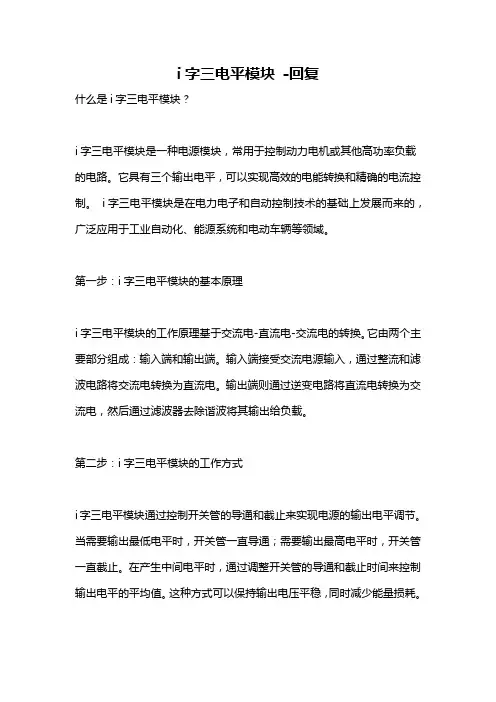
i字三电平模块-回复什么是i字三电平模块?i字三电平模块是一种电源模块,常用于控制动力电机或其他高功率负载的电路。
它具有三个输出电平,可以实现高效的电能转换和精确的电流控制。
i字三电平模块是在电力电子和自动控制技术的基础上发展而来的,广泛应用于工业自动化、能源系统和电动车辆等领域。
第一步:i字三电平模块的基本原理i字三电平模块的工作原理基于交流电-直流电-交流电的转换。
它由两个主要部分组成:输入端和输出端。
输入端接受交流电源输入,通过整流和滤波电路将交流电转换为直流电。
输出端则通过逆变电路将直流电转换为交流电,然后通过滤波器去除谐波将其输出给负载。
第二步:i字三电平模块的工作方式i字三电平模块通过控制开关管的导通和截止来实现电源的输出电平调节。
当需要输出最低电平时,开关管一直导通;需要输出最高电平时,开关管一直截止。
在产生中间电平时,通过调整开关管的导通和截止时间来控制输出电平的平均值。
这种方式可以保持输出电压平稳,同时减少能量损耗。
第三步:i字三电平模块的优势和应用i字三电平模块具有以下几个优势:1. 高效能:i字三电平模块的能量转换效率很高,可以减少能源损耗。
2. 精确控制:i字三电平模块可以精确控制输出电压和电流,适应不同负载的需求。
3. 可靠性高:i字三电平模块采用先进的保护机制和故障检测技术,可以有效防止过流、过压等故障发生。
i字三电平模块广泛应用于工业自动化、能源系统和电动车辆等领域。
在工业自动化领域,它可以用于控制动力电机,提高运动控制系统的精确度和能效。
在能源系统中,i字三电平模块可以用于光伏和风力发电系统,提高电能的转换效率。
在电动车辆领域,i字三电平模块可以控制电动汽车的驱动电机,提高续航能力和能源利用率。
总结:i字三电平模块是一种高效能、精确控制的电源模块。
它通过控制开关管的导通和截止来实现电源输出电平的调节,并具有高效能、精确控制和高可靠性的优势。
i字三电平模块在工业自动化、能源系统和电动车辆等领域有广泛的应用。
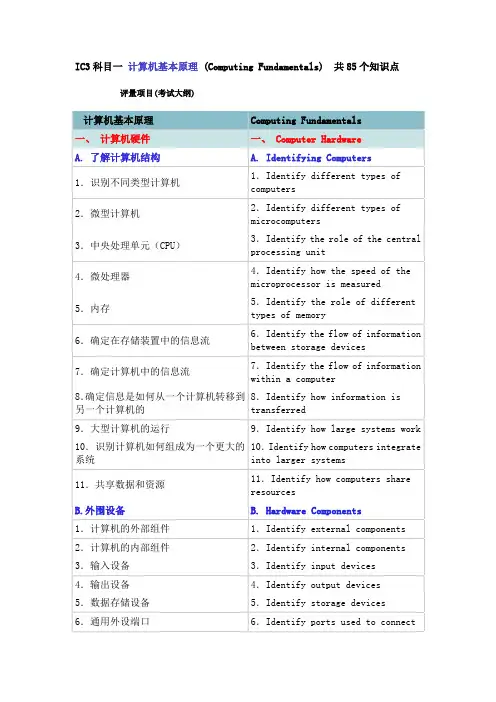
IC3科目一计算机基本原理(Computing Fundamentals) 共85个知识点评量项目(考试大纲)计算机基本原理Computing Fundamentals一、计算机硬件一、 Computer HardwareA. 了解计算机结构 A. Identifying Computers1.识别不同类型计算机1.Identify different types of computers2.微型计算机2.Identify different types of microcomputers3.中央处理单元(CPU)3.Identify the role of the central processing unit4.微处理器4.Identify how the speed of the microprocessor is measured5.内存5.Identify the role of different types of memory6.确定在存储装置中的信息流6.Identify the flow of information between storage devices7.确定计算机中的信息流7.Identify the flow of information within a computer8.确定信息是如何从一个计算机转移到另一个计算机的8.Identify how information is transferred9.大型计算机的运行9.Identify how large systems work10.识别计算机如何组成为一个更大的系统10.Identify how computers integrate into larger systems11.共享数据和资源11.Identify how computers share resourcesB.外围设备 B. Hardware Components1.计算机的外部组件1.Identify external components 2.计算机的内部组件2.Identify internal components 3.输入设备3.Identify input devices4.输出设备4.Identify output devices 5.数据存储设备5.Identify storage devices6.通用外设端口6.Identify ports used to connect devices7.计算机组件的常见问题7.Identify and be able to solve common problemsC.计算机性能 C. Performance1.微处理器速度1.Microprocessor speed2.随机存储器对计算机性能的影响2.How RAM affects performance3.存储设备对计算机性能的影响3.How storage devices affect performance4.其它影响因素4.Other factors that affect performanceD.购买计算机 D. Purchasing Decisions1.根据用途选择大型计算机系统1.Identify when large systems should be used2.如何选择正确的计算机2.Identify how to select the right type of computer3.如何在台式机与笔记本电脑之间选择3.Identify how to decide between a desktop or laptop4.考虑硬件事项4.Identify hardware considerations 5.考虑软件事项5.Identify software considerations6.综合事项6.Identify integration considerations7.理解价格是如何落实到硬件,软件因素上的7.Identify how price is impacted by hardware and software8.购买计算机时要考虑的保修、技术支持、承诺和其它问题8.Warranties, support, agreement, etc二、计算机软件二、 Computer SoftwareA.软件概述 A. Software Basics1.数据是如何输入到计算机中的1.Identify how data is input into a computer2.理解数据是如何从模拟转换到数字的2.Identify how data is transformed from analog to digital3.理解用户如何通过键入指令来与软件交互的3.Identify how users interact with software4.理解软件如何使用规则(算法)来处理数据4.Identify how software applies rules to process data5.理解软件如何将数据处理结果输出到5.Identify how software outputs the诸如监视器或打印机这样的输出设备上 result of data processing6.理解软件代码中的问题6.Identify problems in software code(bugs)B.软件类型 B. Types of Software1.操作系统1.Operating systems2.文字处理软件2.Word processors3.电子表格软件3.Spreadsheet programs4.简报软件4.Presentation programs5.数据库软件5.Database programs6.图形软件6.Graphics programs7.多媒体软件7.Multimedia programs8.电子邮件软件8.Electronic mail programs 9.Web浏览器9.Web browsers10.实用软件10.Utility programs11.专用的个人软件11.Specialized personal software12.定制小型机和大型机软件12.Custom mini-or mainframe software13.套装软件13.Identify software ”suites”14.用错软件时产生的错误14.Problems arising from using the wrong software三、操作系统软件三、 Using an Operating SystemA.操作系统 A. Operating Systems1.理解操作系统的用途1.Identify the purpose of an operating system2.理解机遇字符的操作系统(DOS) 2.Identify character-based operating systems (DOS)3.理解图形用户界面操作系统3.Identifygraphical-user-interface operating systems4.识别Windows的不同版本4.Identify different versions of windows5.理解非Windows操作系统5.Identify non-Windows operating systems6.操作系统的能力和限制6.Capabilities and limitations ofthe operating system B. Windows桌面概述 B. Desktop Basics1.认识Windows桌面元素1.Identify elements of the Windows desktop2.窗口操作(最大化,最小化,关闭)2.Manipulate windows (maximize, minimize, close)3.关闭,重启计算机3.Shut down and restart the computer4.使用Windows开始菜单和任务栏4.Use the Windows Start menu and Taskbar5.添加快捷方式到开始菜单5.Add a shortcut to the Start menu6.在打开的窗口/应用程序之间切换6.Switch between open windows/programs7.使用在线帮助7.Use Online Help8.创建,删除,移动和修改桌面目录8.Create, delete, move and modify desktop folders9.创建,删除,移动和修改桌面图标9.Create, delete, move and modify desktop icons10.启动Windows资源管理器和文件管理器10.Start the Windows Explorer/File Manager11.定义目录/文件夹结构11.Identify the directory/folder structure12.改变目录和文件视图12.Change directory and file views13.创建,移动,复制,删除目录13.Create, move, copy and delete a directory/folder14.选择一个或多个文件14.Select one or more files15.移动,复制,删除和更名文件15.Move, copy, delete and rename a file16.显示和识别文件属性16.Display and identify file properties17.查找文件17.Find files18.格式化软盘18.Format a floppy disk19.文件操作需注意的问题19.Precautions when manipulating files20.解决文件操作的一般性问题20.Solve common file problemsC. 系统设置 C. System Setting1.显示控制面板1.Display control panels2.识别控制面板上的不同功能2.Identify different control panel functions3.时间,日期设定3.Change date/time settings 4.修改显示设置4.Change display settings5.改变系统设置时的常见问题5.Identify precautions when changing system settings6.改变操作系统设置解决常见问题6.Solve problems associated with changing system settings7.软件安装7.Install software8.识别已安装软件8.Identify installed applications 9.开始安装应用程序9.Start installed applications。
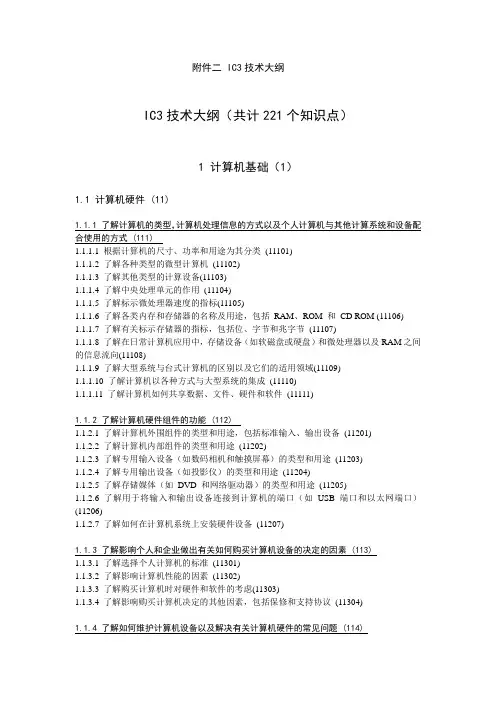
附件二 IC3技术大纲IC3技术大纲(共计221个知识点)1 计算机基础(1)1.1 计算机硬件 (11)1.1.1 了解计算机的类型,计算机处理信息的方式以及个人计算机与其他计算系统和设备配合使用的方式 (111)1.1.1.1 根据计算机的尺寸、功率和用途为其分类(11101)1.1.1.2 了解各种类型的微型计算机(11102)1.1.1.3 了解其他类型的计算设备(11103)1.1.1.4 了解中央处理单元的作用(11104)1.1.1.5 了解标示微处理器速度的指标(11105)1.1.1.6 了解各类内存和存储器的名称及用途,包括RAM、ROM 和CD ROM (11106) 1.1.1.7 了解有关标示存储器的指标,包括位、字节和兆字节(11107)1.1.1.8 了解在日常计算机应用中,存储设备(如软磁盘或硬盘)和微处理器以及RAM之间的信息流向(11108)1.1.1.9 了解大型系统与台式计算机的区别以及它们的适用领域(11109)1.1.1.10 了解计算机以各种方式与大型系统的集成(11110)1.1.1.11 了解计算机如何共享数据、文件、硬件和软件(11111)1.1.2 了解计算机硬件组件的功能 (112)1.1.2.1 了解计算机外围组件的类型和用途,包括标准输入、输出设备(11201)1.1.2.2 了解计算机内部组件的类型和用途(11202)1.1.2.3 了解专用输入设备(如数码相机和触摸屏幕)的类型和用途(11203)1.1.2.4 了解专用输出设备(如投影仪)的类型和用途(11204)1.1.2.5 了解存储媒体(如DVD 和网络驱动器)的类型和用途(11205)1.1.2.6 了解用于将输入和输出设备连接到计算机的端口(如USB 端口和以太网端口)(11206)1.1.2.7 了解如何在计算机系统上安装硬件设备(11207)1.1.3 了解影响个人和企业做出有关如何购买计算机设备的决定的因素 (113)1.1.3.1 了解选择个人计算机的标准(11301)1.1.3.2 了解影响计算机性能的因素(11302)1.1.3.3 了解购买计算机时对硬件和软件的考虑(11303)1.1.3.4 了解影响购买计算机决定的其他因素,包括保修和支持协议(11304)1.1.4 了解如何维护计算机设备以及解决有关计算机硬件的常见问题 (114)1.1.4.1 了解如何防止计算机硬件被盗或损坏(11401)1.1.4.2 了解可能导致计算机硬件或媒体损坏的因素(如过热或潮湿)(11402)1.1.4.3 了解如何防止计算机硬件受电源波动、断电及其他电力问题的影响(11403)1.1.4.4 了解与计算机硬件有关的常见问题,如硬件设备无法操作(11404)1.1.4.5 了解不正确维护硬件可能导致的常见问题(11405)1.1.4.6 了解用户可以日常执行的维护工作,如磁盘的清理和碎片整理(11406)1.1.4.7 了解只能由经验丰富的专业人员执行的维护(11407)1.1.4.8 了解解决计算机相关问题所需的步骤(11408)1.2 计算机软件 (12)1.2.1 了解软件和硬件是如何协作以执行计算任务以及软件是如何开发和升级的(121) 1.2.1.1 了解硬件和软件如何协作(12101)1.2.1.2 了解有关软件开发流程的简单术语和概念(12102)1.2.1.3 了解有关软件升级的问题,如升级的利弊及方法(12103)1.2.2 了解软件的各种类型、有关软件类别的一般概念以及各类软件最适合与不适合完成的任务 (122)1.2.2.1 了解有关文字处理的基本概念和文字处理应用程序的常用功能(12201)1.2.2.2 了解有关电子表格的基本概念和电子表格应用程序的常用功能(12202)1.2.2.3 了解有关演示文稿软件的基本概念和演示文稿应用程序的常用功能(12203)1.2.2.4 了解有关数据库的基本概念和数据库应用程序的常用功能(12204)1.2.2.5 了解有关图形和多媒体程序的基本概念以及图形和多媒体软件的常用功能(12205) 1.2.2.6 了解各种实用程序的类型和用途(12206)1.2.2.7 了解其他软件类型(12207)1.2.2.8 了解如何根据特定目的选择适当的应用程序,以及将不适当的软件产品用于特定目的时可能引起的问题(12208)1.3 使用操作系统 (13)1.3.1 了解操作系统的概念及原理,以及解决有关操作系统的常见问题 (131)1.3.1.1 了解操作系统的用途以及操作系统与应用软件的区别(13101)1.3.1.2 了解各种不同的操作系统,包括DOS、Windows 和Macintosh (13102)1.3.1.3 了解使用字符界面操作系统与图形界面操作系统之间的区别(13103)1.3.1.4 了解操作系统的功能和局限性(13104)1.3.1.5 了解和解决有关操作系统的常见问题(13105)1.3.2 操作和控制 Windows 桌面、文件及磁盘 (132)1.3.2.1 了解Windows 桌面上的元素(13201)1.3.2.2 操作窗口,如最小化窗口(13202)1.3.2.3 关闭、注销和重新启动计算机(13203)1.3.2.4 使用Windows“开始”菜单和任务栏(13204)1.3.2.5 操作桌面文件夹和图标(13205)1.3.2.6 使用Windows 资源管理器和文件管理器管理文件(13206)1.3.2.7 了解操作文件时应该注意的事项,包括使用标准化命令约定(13207)1.3.2.8 解决与处理文件有关的常见问题(13208)1.3.3 了解如何更改系统设置、安装和删除软件 (133)1.3.3.1 显示控制面板(13301)1.3.3.2 了解各种控制面板设置(13302)1.3.3.3 更改简单的控制面板设置,如日期和时间设置(13303)1.3.3.4 显示和更新已安装的打印机列表(13304)1.3.3.5 了解有关更改系统设置的注意事项(13305)1.3.3.6 安装软件,包括通过在线资源安装更新(13306)1.3.3.7 了解与安装和运行应用程序有关的常见问题(13307)2 常用软件(2)2.1 常用程序功能 (21)2.1.1 能够启动和退出 Windows 应用程序并利用在线帮助的资源 (211)2.1.1.1 启动Windows 应用程序(21101)2.1.1.2 退出Windows 应用程序(21102)2.1.1.3 了解各种帮助资源并选择适合的资源以获取帮助(21103)2.1.1.4 利用各式各样的自动化帮助(21104)2.1.2 了解 Windows 应用程序的常见屏幕元素,更改应用程序设置和管理应用程序内的文件 (212)2.1.2.1 了解Windows 应用程序的常见屏幕元素(如菜单、工具栏和文档窗口)(21201) 2.1.2.2 显示或隐藏工具栏(21202)2.1.2.3 在多个打开的文档间切换显示(21203)2.1.2.4 更改视图(21204)2.1.2.5 更改显示比例(21205)2.1.2.6 创建文件(21206)2.1.2.7 打开应用程序和文件,了解文件的扩展名,包括.xls或.doc (21207)2.1.2.8 在指定的位置或以指定的格式保存文件(21208)2.1.2.9 关闭文件(21209)2.1.2.10 了解和解决与处理文件有关的常见问题(如产品或版本不兼容)(21210)2.1.3 执行常用的编辑和格式化功能 (213)2.1.3.1 利用滚动条、键盘快捷键定位命令浏览打开的文件(21301)2.1.3.2 在文件中插入文本和数字(21302)2.1.3.3 执行简单编辑(如剪切、复制和移动信息)(21303)2.1.3.4 使用撤消、恢复和重复命令(21304)2.1.3.5 查找信息(21305)2.1.3.6 替换信息(21306)2.1.3.7 检查拼写(21307)2.1.3.8 执行简单的文本格式化(21308)2.1.3.9 在文件中插入图片(21309)2.1.3.10 修改文件中的图片(21310)2.1.3.11 在文件中添加绘图对象,包括创建和修改对象(21311)2.1.4 执行常用的打印功能 (214)2.1.4.1 格式化文档以便进行打印(21401)2.1.4.2 打印前预览文件(21402)2.1.4.3 打印文件,设置常用的打印选项(21403)2.1.4.4 管理打印和打印工作(21404)2.1.4.5 了解和解决与打印有关的常见问题(21405)2.2 文字处理功能 (22)2.2.1 能够格式化文本和文档,包括能够使用自动格式化工具 (221) 2.2.1.1 了解屏幕上的各种格式标记,包括换行符、段落标记等(22101) 2.2.1.2 选择文字、行、段落、文档(22102)2.2.1.3 更改行距和段落间距(22103)2.2.1.4 文本缩进(22104)2.2.1.5 创建和修改项目符号和编号(22105)2.2.1.6 利用框架结构格式化文档(22106)2.2.1.7 插入符号、特殊字符(22107)2.2.1.8 插入日期和时间(22108)2.2.1.9 插入、查看和打印文档注释(22109)2.2.1.10 显示标尺(22110)2.2.1.11 使用Tab 键(22111)2.2.1.12 插入和删除分页符或分节符(22112)2.2.1.13 插入、修改和格式化页码(22113)2.2.1.14 创建、修改和格式化页眉和页脚(22114)2.2.1.15 创建、修改和格式化脚注和尾注(22115)2.2.1.16 为文本段落应用边框和底纹(22116)2.2.1.17 创建、修改和应用样式(22117)2.2.1.18 复制格式(格式刷)(22118)2.2.1.19 使用语言工具(22119)2.2.1.20 在文档中使用追踪修订功能(22120)2.2.1.21 显示文档统计信息(22121)2.2.2 能够插入、编辑和格式化文档中的表格 (222)2.2.2.1 创建表格(22201)2.2.2.2 插入和编辑表格中的数据(22202)2.2.2.3 修改表格结构(22203)2.2.2.4 格式化表格(22204)2.2.2.5 排序表格中的数据(22205)2.3 电子表格功能 (23)2.3.1 能够修改工作表数据和结构并格式化工作表中的数据 (231)2.3.1.1 了解如何在电子表格中组织表格数据(23101)2.3.1.2 使用键盘和鼠标选择信息,包括选择行、列和工作表(23102)2.3.1.3 插入和修改数据(23103)2.3.1.4 修改表格结构(23104)2.3.1.5 了解和更改数字格式,包括货币、日期和时间及百分数格式(23105)2.3.1.6 为单元格应用边框和底纹(23106)2.3.1.7 指定单元格对齐方式(如单元格中的文本自动换行)(23107)2.3.1.8 应用表格自动套用格式(23108)2.3.2 能够排序数据、使用公式和函数处理数据并能在工作表中添加和修改图表。
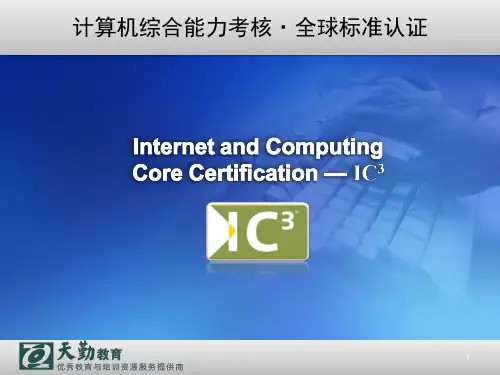
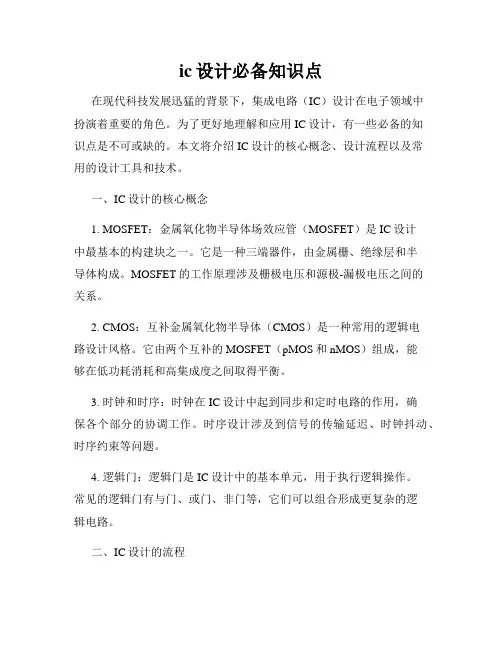
ic设计必备知识点在现代科技发展迅猛的背景下,集成电路(IC)设计在电子领域中扮演着重要的角色。
为了更好地理解和应用IC设计,有一些必备的知识点是不可或缺的。
本文将介绍IC设计的核心概念、设计流程以及常用的设计工具和技术。
一、IC设计的核心概念1. MOSFET:金属氧化物半导体场效应管(MOSFET)是IC设计中最基本的构建块之一。
它是一种三端器件,由金属栅、绝缘层和半导体构成。
MOSFET的工作原理涉及栅极电压和源极-漏极电压之间的关系。
2. CMOS:互补金属氧化物半导体(CMOS)是一种常用的逻辑电路设计风格。
它由两个互补的MOSFET(pMOS和nMOS)组成,能够在低功耗消耗和高集成度之间取得平衡。
3. 时钟和时序:时钟在IC设计中起到同步和定时电路的作用,确保各个部分的协调工作。
时序设计涉及到信号的传输延迟、时钟抖动、时序约束等问题。
4. 逻辑门:逻辑门是IC设计中的基本单元,用于执行逻辑操作。
常见的逻辑门有与门、或门、非门等,它们可以组合形成更复杂的逻辑电路。
二、IC设计的流程1. 规划和需求分析:在IC设计之前,需要明确设计的目标和需求,包括功能、性能、功耗等方面的要求。
这些需求将指导后续的设计过程。
2. 电路架构设计:在这一阶段,设计师需要确定电路的整体结构和模块划分。
根据需求分析,选择合适的电路拓扑,并确定模块之间的接口和通信方式。
3. 逻辑设计:逻辑设计是将电路架构转化为逻辑电路图的过程。
使用硬件描述语言(HDL)进行高级抽象描述,并进行功能验证和仿真。
4. 物理设计:物理设计将逻辑电路图转化为布局和布线信息。
包括芯片尺寸和形状的规划,元件的布局,信号线的路径规划等。
5. 验证和测试:在IC设计完成后,需要进行验证和测试以确保其满足设计要求。
常用的验证手段包括静态和动态的功能验证、时序约束验证以及功耗和可靠性测试等。
三、IC设计的常用工具和技术1. EDA工具:EDA(Electronics Design Automation)工具是IC设计中不可或缺的辅助软件。
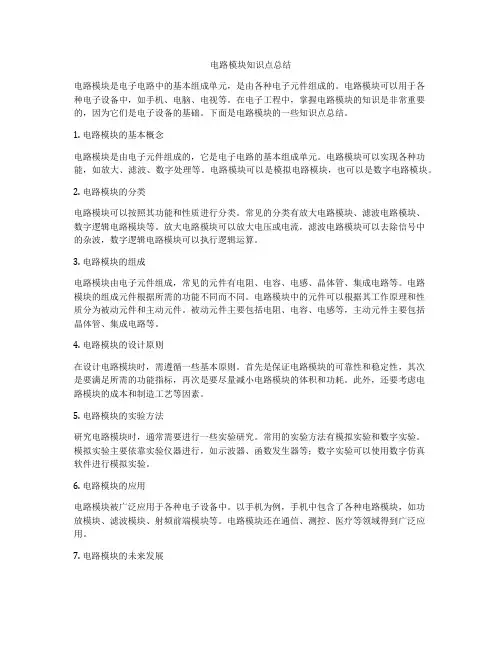
电路模块知识点总结电路模块是电子电路中的基本组成单元,是由各种电子元件组成的。
电路模块可以用于各种电子设备中,如手机、电脑、电视等。
在电子工程中,掌握电路模块的知识是非常重要的,因为它们是电子设备的基础。
下面是电路模块的一些知识点总结。
1. 电路模块的基本概念电路模块是由电子元件组成的,它是电子电路的基本组成单元。
电路模块可以实现各种功能,如放大、滤波、数字处理等。
电路模块可以是模拟电路模块,也可以是数字电路模块。
2. 电路模块的分类电路模块可以按照其功能和性质进行分类。
常见的分类有放大电路模块、滤波电路模块、数字逻辑电路模块等。
放大电路模块可以放大电压或电流,滤波电路模块可以去除信号中的杂波,数字逻辑电路模块可以执行逻辑运算。
3. 电路模块的组成电路模块由电子元件组成,常见的元件有电阻、电容、电感、晶体管、集成电路等。
电路模块的组成元件根据所需的功能不同而不同。
电路模块中的元件可以根据其工作原理和性质分为被动元件和主动元件。
被动元件主要包括电阻、电容、电感等,主动元件主要包括晶体管、集成电路等。
4. 电路模块的设计原则在设计电路模块时,需遵循一些基本原则。
首先是保证电路模块的可靠性和稳定性,其次是要满足所需的功能指标,再次是要尽量减小电路模块的体积和功耗。
此外,还要考虑电路模块的成本和制造工艺等因素。
5. 电路模块的实验方法研究电路模块时,通常需要进行一些实验研究。
常用的实验方法有模拟实验和数字实验。
模拟实验主要依靠实验仪器进行,如示波器、函数发生器等;数字实验可以使用数字仿真软件进行模拟实验。
6. 电路模块的应用电路模块被广泛应用于各种电子设备中。
以手机为例,手机中包含了各种电路模块,如功放模块、滤波模块、射频前端模块等。
电路模块还在通信、测控、医疗等领域得到广泛应用。
7. 电路模块的未来发展随着科技的不断进步,电路模块也在不断发展。
未来的电路模块将趋向于集成化和多功能化。
集成电路技术的进步使得电路模块可以更小型化、更低功耗;新材料和新工艺的应用使得电路模块的性能得到提升。
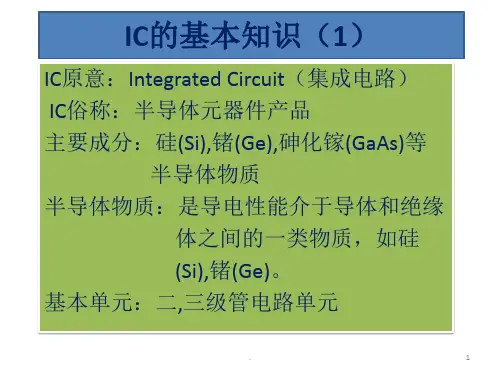

IC3计算机核⼼技能与信息素养⼤赛⼤赛简介:●⼤赛内容主要依据微软办公软件全球认证中⼼推出的计算机综合应⽤能⼒考核?全球认证(Internet and Computing Core Certification,简称IC3)标准,结合我国⾼等教育和职业教育“计算机基础”课程的基本要求,开展此项赛事。
IC3——全球第⼀张计算机基础综合技能认证:●美国微软全球认证中⼼思递波公司——微软国际认证唯⼀授权Office办公软件全球性专业认证研发权威机构●IC3——Internet and Computing Core Certification ,⽹络与信息核⼼能⼒认证●是⼀套在国际上被证明权威有效的信息化教育和认证体系。
三⼤模块:●CF应⽤计算机基础能⼒,KA主要软件应⽤能⼒,LO⽹络应⽤能⼒●计算机概论关键应⽤在线操作●计算机硬件常见程序功能局域⽹和⼴域⽹●计算机软件⽂字处理功能使⽤电⼦邮件E-Mail●使⽤操作系统电⼦表格功能因特⽹应⽤Internet●计算机和因特⽹对社会的影响组织单位:●由全国⾼等院校计算机基础教育研究会;●由教育部⾼等学校本科相关教学指导委员会、教育部⾼等学校⾼职⾼专相关教学指导委员会、教育部职业教育相关⾏业教学指导委员会;●由中国铁道出版社、北京国铁天勤⽂化发展有限公司承办;●微软办公软件全球认证管理中⼼给予技术⽀持。
IC3的优势根源:●根据市场要求,不断变更的考试试题库●试题的命题组是由来⾃20个国家,汇集270个题材的国际专家组成●每年试题都得到国际计算机⾏业的第三⽅专家鉴定,保证每道试题的质量获得IC3证书的好处:●与国际接轨,获得世界60多个国家的认可(美国、加拿⼤、英国、⽇本等),有⼤量的国际性机构对该认证给予⽀持(详见链接),确保通过IC3考试的⼈才可以通⾏世界。
●美国1500多所⼤学对通过IC3认证考试的学⽣打开⽅便之门,通过该认证考试的学⽣可以在世界任何⼀地来申请免修美国⼤学的部分学分。

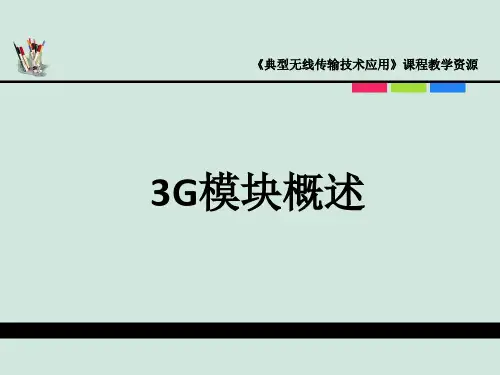
ic3简介“IC3计算机综合应⽤能⼒考核?全球标准认证”简介⼀、全球信息通信技术(Information Communication Technology ,ICT)专业能⼒考试管理中⼼-思递波(Certiport)简介(⼀)基本情况●成⽴于1997年,总部位于美国●是全球性三⼤IT测验与教学研究中⼼之⼀●是微软办公软件全球考试管理中⼼(⼆)⽬前使命●运⽤⾼仿真的模拟技术与全球标准国际认证,成功提升个⼈⽣活品质与升学、就业、职场竞争⼒。
●配合联合国科技善⽤者计划(Power Users of Technology),推动全球计算机综合能⼒的标准教学与考核。
(三)全球统计成果资料●全球参加认证考试的⼈次已超过1,100万⼈次(截⽌2012年1⽉)(11+ millionValidate Exams Delivered)●全球已有15,000以上的考试中⼼(15,000+ testing center world-wide)●全球每⽉超过150,000考试⼈次(150,000 exams monthly)●通⾏132个国家和地区(132 countries in operation)●IC3已经被翻译成24种语⾔(24 languages)●在全球19个国家聘请270位主题式专家制定全球标准与命题⼆、IC3是什么?为何要引⼊IC3全球标准?(⼀)IC3发展背景计算机综合应⽤能⼒考核?全球标准认证(Internet and Computing Core Certification,简称IC3)是根据联合国科技善⽤者计划,由全球性ICT专业能⼒考试管理中⼼—思递波(Certiport)与全球数字素养咨询委员会(Global Digital Literacy Council,GDLC)共同提供的国际权威认证。
IC3的宗旨是根据全球国际协议的技能标准开发考试认证,⽬标是提升全球计算机与⽹络科技信息知识⽔平,提⾼信息软件应⽤知能与技术,使学⽣及社会⼈员具备⼀般ICT应⽤的核⼼知识与技能,获得政府、企业和教育机构等社会部门的⼴泛认可。
计算机ic3试题及答案一、计算机IC3简介计算机IC3(Internet and Computing Core Certification)是一项全球通用的计算机技术认证,旨在评估个人对计算机基本知识和技能的掌握程度。
该认证分为三个部分:计算机基础、计算机操作和互联网基础。
对于希望证明自己在计算机应用方面具有基本素质的个人来说,IC3证书是一种重要的凭证。
二、计算机IC3试题1. 计算机基础部分试题题目一:计算机的基本组成部分是什么?答案:计算机的基本组成部分包括:中央处理器(CPU)、内存(RAM)、硬盘、显示器、键盘和鼠标等。
题目二:什么是CPU?答案:CPU,即中央处理器,是计算机的核心部件,负责执行计算机程序的指令和控制计算机的运行。
题目三:什么是操作系统?答案:操作系统是计算机系统中的核心软件,负责管理计算机的资源和提供用户接口,常见的操作系统有Windows、Mac OS和Linux等。
2. 计算机操作部分试题题目四:如何将文件从一个文件夹复制到另一个文件夹?答案:首先选中要复制的文件,然后右键点击文件,选择“复制”。
接着进入目标文件夹,右键点击目标文件夹,选择“粘贴”。
题目五:如何在Microsoft Word中插入图片?答案:在Word文档中,点击“插入”选项卡,在“插入”选项卡中选择“图片”,然后浏览并选择要插入的图片文件,最后点击“插入”按钮即可将图片插入到Word文档中。
题目六:如何在浏览器中清除缓存?答案:不同浏览器的清除缓存方法略有不同,以Google Chrome为例,点击浏览器右上角的菜单图标,选择“更多工具”,然后选择“清除浏览数据”,在弹出的对话框中选择要清除的缓存数据并点击“清除数据”按钮。
3. 互联网基础部分试题题目七:什么是URL?答案:URL,即统一资源定位符,是互联网上标识资源(如网页、图片等)位置的地址,URL由协议、主机名和路径组成。
题目八:什么是HTTP?答案:HTTP,即超文本传输协议,是用于在网络上传输和接收超文本的协议,是构建互联网基础的重要协议之一。
i字三电平模块-回复I字三电平模块: 打造高效能供电源导言:在现代科技飞速发展的时代,电力供应依然是每个行业发展的基础。
一种被广泛使用的电力转换和先锋技术是I字三电平模块。
本文将深入探讨这一模块的原理、应用和未来发展,以及如何通过使用该模块来提高供电源的效能。
第一节: I字三电平模块的原理I字三电平模块是一种电力转换电路,由三个电平构成。
这三个电平是+Vdc、0 和-Vdc。
在I字三电平模块中,一个或多个DC-DC转换器被用来实现这种高压电平的转换。
通过调整转换器的输出电压,可以得到所需的电平。
在使用I字三电平模块时,输入电压被升降两次,以适应所需电压。
首先,输入电压被升到一个较高的电压水平,然后再降到负电平或零电平。
这种升降电压的过程可以通过多个不同的DC-DC转换器来实现。
这些转换器之间的连接通常是并联或串联的。
第二节: I字三电平模块的应用I字三电平模块在许多领域中都有广泛的应用。
以下是其中一些领域:1. 电动汽车: I字三电平模块可以用于电动汽车和混合动力车辆的电力系统中。
通过使用该模块,可以实现高效的电力转换和管理,提高汽车的续航里程和性能。
2. 太阳能和风能系统: 太阳能和风能系统需要将不稳定的直流电转换为稳定的交流电。
I字三电平模块可以用来实现这一转换过程,同时提高能源利用效率。
3. 通信系统: 在通信领域,I字三电平模块可以用来稳定和转换电力供应,以确保通信设备的正常运行。
4. 工业自动化: I字三电平模块可以用于工业自动化系统中的电力转换和供应。
通过使用该模块,可以提高机器的工作效率和稳定性。
第三节: I字三电平模块的未来发展随着能源需求的不断增长和对高效能供电的需求,I字三电平模块的未来发展前景广阔。
以下是一些可能的发展方向:1. 高效能转换器: 为了提高能量转换效率,今后的I字三电平模块也许会采用更先进的DC-DC转换器技术。
这些技术可能包括谐振转换器和多级转换器等。
2. 智能控制和管理: 未来的I字三电平模块可能会加入智能控制和管理功能,以实现更高的能源利用效率和供电稳定性。
一、计算机基础模块二、名称(中文) 模块名称(英文)计算机基本原理 Computing Fundamentals一、计算机硬件一、Computer Hardware序号A.了解计算机结构 A.Identifying Computers1 1.识别不同类型计算机 1.Identify different types of computers2 2.识别微型计算机 2.Identify different types of microcomputers3 3.识别中央处理器(CPU) 3.Identify the role of the central processing unit4 4.识别微处理器 4.Identify how the speed of the microprocessor is measured5 5.识别内存 5.Identify the role of different types of memory6 6.确定在存储装置中的信息流 6.Identify the flow of information between storage devices7 7.确定计算机中的信息流 7.Identify the flow of information within a computer88.确定信息是如何从一台计算机转移到另一台计算机的8.Identify how information is transferred9 9.确定大型计算机的运行 9.Identify how large systems work10 10.识别计算机如何组成为一个更大的系统 10.Identify how computers integrate into larger systems11 11.共享数据和资源 11.Identify how computers share resourcesB.外围设备 B.Hardware Components12 1.识别计算机的外部组件 1.Identify external components13 2.识别计算机的内部组件 2.Identify internal components14 3.识别输入设备 3.Identify input devices15 4.识别输出设备 4.Identify output devices16 5.识别数据存储设备 5.Identify storage devices17 6.识别通用外设端口 6.Identify ports used to connect devices18 7.识别计算机组件的常见问题 7.Identify and be able to solve common problemsC.计算机性能 C.Computer Performance19 1.微处理器速度 1.Microprocessor speed附录IC3 三个模块的知识点分配312计算机应用基础续表模块名称(中文) 模块名称(英文)计算机基本原理 Computing Fundamentals一、计算机硬件一、Computer Hardware序号C.计算机性能 C.Performance20 2.随机存储器对计算机性能的影响 2.How RAM affects performance21 3.存储设备对计算机性能的影响 3.How storage devices affect performance22 4.其他影响因素 4.Other factors that affect performance23 D.购买计算机 D.Purchasing Decisions24 1.根据用途选择大型计算机系统 1.Identify when large systems should be used25 2.如何选择正确的计算机 2.Identify how to select the right type of computer26 3.如何在台式机与笔记本式计算机之间选择 3.Identify how to decide between a desktop or laptop27 4.考虑硬件事项 4.Identify hardware considerations28 5.考虑软件事项 5.Identify software considerations29 6.综合事项 6.Identifyintegration onsiderations307.理解价格是如何落实到硬件,软件因素上的7.Identify how price is impacted by hardware and software318.购买计算机时要考虑的保修、技术支持、承诺和其他问题8.Warranties, support, agreement, etc31二、计算机软件二、 Computer SoftwareA.软件概述 A.Software Basics1 1.数据是如何输入到计算机中的 1.Identify how data is input into a computer2 2.理解数据是如何从模拟转换到数字的 2.Identify how data is transformed from analog to digital33.理解用户如何通过键入指令来与软件交互的3.Identify how users interact with software44.理解软件如何使用规则(算法)来处理数据4.Identify how software applies rules to process data 55.理解软件如何将数据处理结果输出到诸如监视器或打印机这样的输出设备上5.Identify how software outputs the result of data processing6 6.理解软件代码中的问题 6.Identify problems in software code(bugs)B.软件类型 B.Types of Software7 1.操作系统 1.Operating systems8 2.文字处理软件 2.Word processors9 3.电子表格软件 3.Spreadsheet programs10 4.简报软件 4.Presentation programs11 5.数据库软件 5.Database programs12 6.图形软件 6.Graphics programs13 7.多媒体软件 7.Multimedia programs14 8.电子邮件软件 8.Electronic mail programs313附录 IC3三个模块的知识点分配续表模块名称(中文) 模块名称(英文)计算机基本原理 Computing Fundamentals二、计算机软件二、Computer Software序号B.软件类型 B.Types of Software15 9.Web 浏览器 9.Web browsers16 10.实用软件 10.Utility programs17 11.专用的个人软件 11.Specialized personal software18 12.定制小型机和大型机软件 12.Custom mini-or mainframe software19 13.套装软件 13.Identify software ”suites”20 14.用错软件时产生的错误 14.Problems arising from using the wrong software20三、操作系统软件三、Using an Operating SystemA.操作系统 A.Operating Systems1 1.理解操作系统的用途 1.Identify the purpose of an operating system2 2.理解基于字符的操作系统(DOS) 2.Identify character-based operating systems (DOS)3 3.理解图形用户界面操作系统 3.Identifygraphical-user-interface operating systems4 4.识别Windows 的不同版本 4.Identify different versions of windows5 5.理解非Windows 操作系统 5.Identify non-Windows operating systems6 6.操作系统的能力和限制 6.Capabilities and limitations of the operating systemB.Windows 桌面概述 B.Desktop Basics7 1.认识Windows 桌面元素 1.Identify elements of the Windows desktop8 2.窗口操作(最大化,最小化,关闭) 2.Manipulate windows (maximize, minimize, close)9 3.关闭,重启计算机 3.Shut down and restart the computer10 4.使用Windows 开始菜单和任务栏 4.Use the Windows Start menu and Taskbar11 5.添加快捷方式到开始菜单 5.Add a shortcut to the Start menu12 6.在打开的窗口/应用程序之间切换 6.Switch betweenopen windows/programs13 7.使用在线帮助 7.Use Online Help14 8.创建,删除,移动和修改桌面目录 8.Create, delete, move and modify desktop folders15 9.创建,删除,移动和修改桌面图标 9.Create, delete, move and modify desktop icons16 10.启动Windows 资源管理器和文件管理器10.Start the Windows Explorer/File Manager17 11.定义目录/文件夹结构 11.Identify thedirectory/folder structure18 12.改变目录和文件视图 12.Change directory and file views19 13.创建,移动,复制,删除目录 13.Create, move, copy and delete a directory/folder20 14.选择一个或多个文件 14.Select one or more files21 15.移动,复制,删除和更名文件 15.Move, copy, delete and rename a file22 16.显示和识别文件属性 16.Display and identify file properties23 17.查找文件 17.Find files24 18.格式化软盘 18.Format a floppy disk314计算机应用基础续表模块名称(中文) 模块名称(英文)计算机基本原理 Computing Fundamentals三、操作系统三、Operation Systems序号B.Windows 桌面概述 B.Desktop Basics25 19.文件操作需注意的问题 19.Precautions when manipulating files26 20.解决文件操作的一般性问题 20.Solve common file problemsC.系统设置 C.System Setting27 1.显示控制面板 1.Display control panels28 2.识别控制面板上的不同功能 2.Identify different control panel functions29 3.时间,日期设定 3.Change date/time settings30 4.修改显示设置 4.Change display settings31 5.改变系统设置时的常见问题 5.Identify precautions when changing system settings32 6.改变操作系统设置解决常见问题 6.Solve problems associated with changing system settings33 7.软件安装 7.Install software34 8.识别已安装软件 8.Identify installed applications35 9.开始安装应用程序 9.Start installed applications 3531+20+35=86二、常用软件序号常用软件 Key Application一、常用程序功能一、Common Program FunctionsA.启动,退出和帮助 A.Start, Exit and Help1 1.启动应用程序 1.Start a Windows application2 2.退出应用程序 2.Exit a Windows application3 3.确定和分级帮助资源 3.Identify and prioritize help resources4 4.获得在线帮助 4.Access online help5 5.使用帮助搜索功能 5.Use help search functionality6 6.访问基于互联网的帮助功能 6.Access Internet-based help functionalityB.应用程序 B.Application Basics7 1.识别Windows 应用程序常见的窗口组件 1.Identify on-screen elements in Windows applications8 2.显示和隐藏工具栏 2.Display or hide toolbars9 3.在打开的文件间切换 3.Switch between open documents10 4.改变视图 4.Change views11 5.改变缩放比例 5.Change magnification level12 6.创建新文件 6.Create new files13 7.基于已存在的模板创建新文件 7.Create new files based on pre-existing templates14 8.打开文件 8.Open files315附录 IC3三个模块的知识点分配续表序号常用软件 Key Application一、常用程序功能一、Common Program FunctionsB.应用程序 B.Application Basics15 9.保存文件 9.Save files16 10.用不同文件名和文件格式,在不同的位置保存文件10.Save files in different location, name, file formats 17 11.确定和解决与文件操作相关的一般问题11.Identify and solve common problems relating to filesC.编辑与格式化 C.Editing and Formatting18 1.使用滚动条、键盘快捷键或“定位”命令在打开的文件中浏览。